#jurisprudence
Text
yes ur honor she did say "no" but i'm an empath and
67 notes
·
View notes
Text
Lawyer: Your honor, if it would please the court, could you sing my client a French nursery rhyme?
Judge: I’ll alouette.
375 notes
·
View notes
Text
"Sometimes I see people darkly warning that prosecuting Trump could set a precedent that would be used to prosecute Democratic presidents for their crimes. My response to this warning is best expressed in the title of a classic song by the band Panic! at the Disco: 'Don’t threaten me with a good time.'
I would love to see President Barack Obama, for example, face criminal prosecution for the many drone strikes he ordered around the world — including the strikes that killed radical imam Anwar al-Awlaki and his sixteen-year-old son, Abdulrahman al-Awlaki, both of whom were US citizens. These strikes amounted to extrajudicial executions of terrorism suspects who hadn’t been convicted of any crime and who were nowhere near anything that could remotely be construed as a battlefield. In the case of al-Awlaki, there’s reason to think that it was an extrajudicial execution not even for clearly illegal acts but for the inflammatory words in his sermons.
And that brings us to the real double standard here. Trying to overturn an American election is the kind of crime the Justice Department takes seriously. Extrajudicially slaughtering scary Muslims in a foreign country, even ones with US citizenship, is not. Even George W. Bush invading Iraq based on lies doesn’t count. Hundreds of thousands of people died and millions became refugees, but those were the wrong kind of victims for our justice system to take an interest in them.
The solution to that double standard, though, isn’t to let Trump off the hook for conspiring to overturn a democratic election. It’s to indict George W. Bush. One president finally being subject to prosecution for some of his crimes isn’t nearly enough, but it’s a start."
- Ben Burgis, from "Donald Trump Being Prosecuted for His Crimes Is Good, Actually." Jacobin, 4 August 2023.
#ben burgis#quote#quotations#american imperialism#war crimes#american history#war on terror#jurisprudence#george w. bush#barrack obama#trump
30 notes
·
View notes
Text
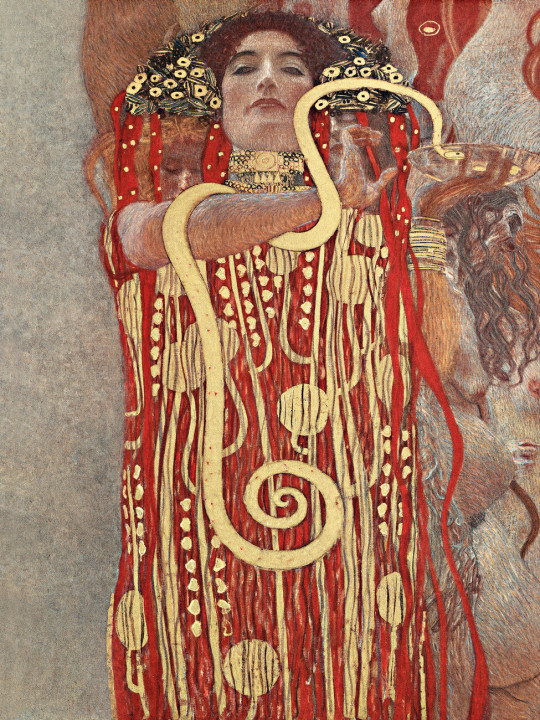
Description of the artwork «Hygieia. A fragment of the painting "Medicine" (the ceiling Paintings for Vienna University)»
In 1894, Gustav Klimt was an extremely popular artist in Vienna. His colleagues dreamt of the glory that surrounded him. He had painted many successful artworks, caressed by critics, he also managed to make the design for the Burgtheater in Vienna and the Vienna Art History Museum. He was only 26 when he received the Golden Order of Merit from Emperor Franz Josef I of Austria for his contributions to murals painted in the Burgtheater. And in 1894, Gustav Klimt received another prestigious large-scale order: the art committee of the Ministry of Education commissioned him and Franz Matsch to design the ceiling paintings for the assembly hall of the University of Vienna, and approved a budget of 60,000 Guilders (today approximately 400,000 Euros).
The painter was asked to create allegorical renderings of the faculties "Medicine," Jurisprudence* and Philosophy* along with the pendentive paintings.
Allegorical ceiling painting of Law for the Jurisprudence* faculty of Vienna University that was unfortunately destroyed in 1945:
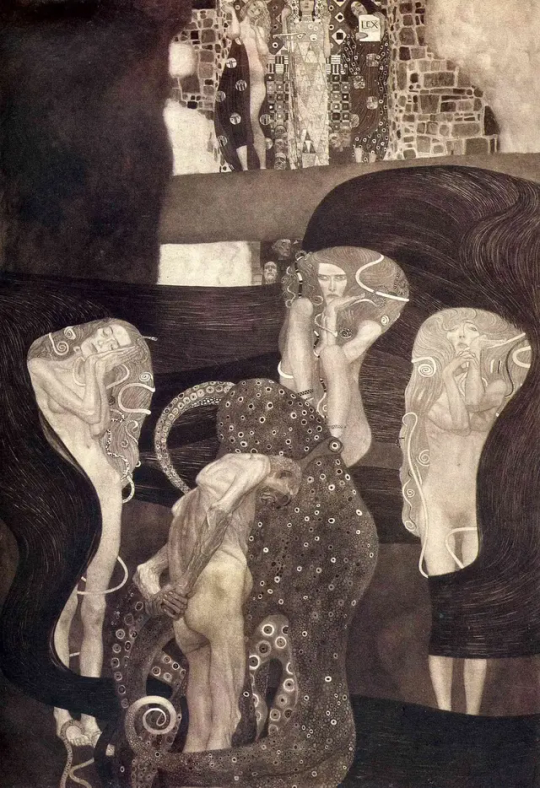
Allegorical ceiling painting for the Philosophy* faculty of Vienna University that was unfortunately destroyed in 1945:
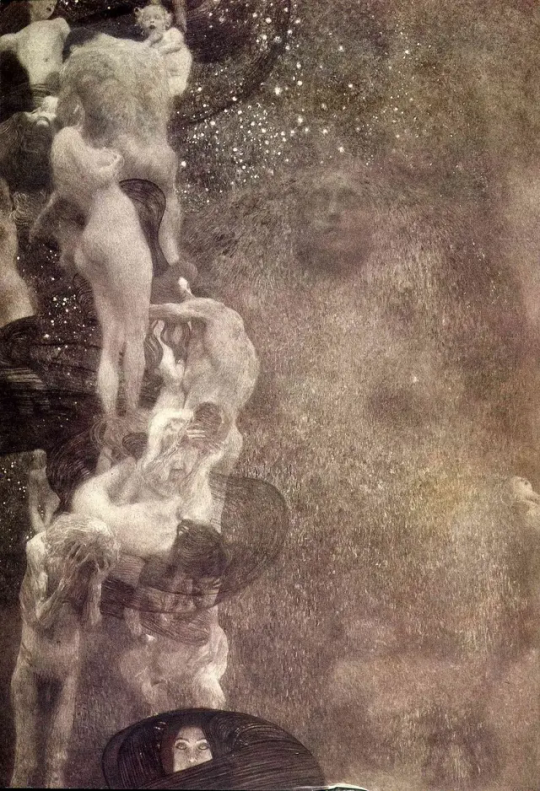
He first presented his rendering Philosophy* at the 6th Secession exhibition in 1900, followed by Medicine* at the 10th Secession exhibition in 1901. Both works met fierce criticism and sparked outrage over artist’s departure from the hitherto adhered to historic-conservative painting traditions. Klimt was asked several times to rework his motifs and even rented a second studio with higher walls in Vienna to accommodate the large-scale works. His Faculty Paintings became a political issue. In 1905, the artist refused to deliver the artworks to the Ministry of Education and, aided by his patron August Lederer, paid back his fee of 30,000 Crowns (today approximately 162,000 Euros). It was to be Gustav Klimt’s last public commission.
At first sight, Klimt's "Hygieia" seems to be put another representation of the femme fatale. "Hygieia" confronts the viewer almost scornfully, her haughtiness is implied by her upraised chin and inscrutable gaze and her posture is slightly ominous, the golden snake twines sinuously along her upraised arm and it is unclear whether she offering the bowl or withholding it. The stylization of her encompassing red and gold robe serves to hide her body and her hair is covered beneath her rich headdress, the only indication of humanity and feminine sensuality lie in her bare face and arms, and even here, her sensuality becomes a source of power, though she stares out of the painting, her eyes are hidden in shadow. It is clear that "Hygieia" is powerful and dangerous in her own right.
"Hygieia", according to Greek myth, was the goddess of hygiene, of health, cleanliness and sanitation. In fact, the snake and the bowl remain symbols of pharmacy to this day. In this context, she was not a femme fatale but belonged rather in the traditional categorization of women as caretakers. This explanation of "Hygieia" contrasts with Gustav Klimt's powerful, inscrutable and even ominous depiction of her.
At the same time, it is clear that "Hygieia" is not the only figure in this artwork, hidden amongst her elaborate headdress are the reposing faces of two women and the bare torso of a naked pregnant woman is partially hidden by "Hygieia's" red robe. Behind "Hygieia", or perhaps within her, are very human very vulnerable women whose downward gazes, flowing hair and nudity speak much more to traditional depictions of women than "Hygieia's" strange defiance and power. Is she protecting these women? Is she instead threatening such women? Are these women another side of "Hygieia," is she both vulnerable and powerful, innocent and mysterious? These questions are swallowed in the inscrutable gaze of Klimt's "Hygieia."
#gustav klimt#hygieia#medicine#philosophy#law#jurisprudence#allegorical art#allegorical painting#hygiene#vienna university#1940s#21st century art#greek mythology#femme fatale#femme fatales#dark feminine aesthetic#dark feminine energy#serpents#snakes#serpent#snake#1940#women in art#austrian artist#austrian artists#austrian art
6 notes
·
View notes
Video
youtube
Garbage Day
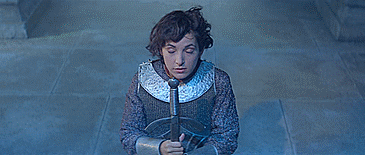


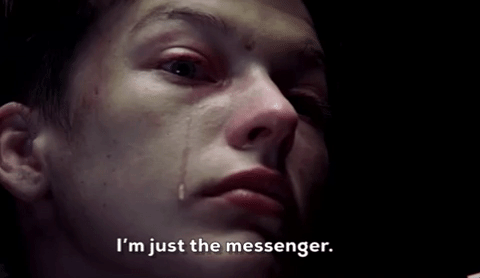
#youtube#recycle bin#garbage#rock music#mondays#monday#happy monday#retro#hard rock#jurisprudence#women's history month#joan of arc#saints
2 notes
·
View notes
Link
8 notes
·
View notes
Photo
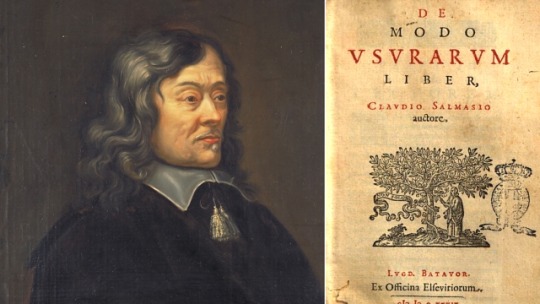
3 septembre 1653 : mort de l'humaniste et philologue Claude Saumaise ➽ http://bit.ly/Claude-Saumaise Médecine, jurisprudence, théologie, philosophie, histoire ecclésiastique, antiquités grecques et romaines, langues anciennes, langues orientales : dépeint par Ménage comme le plus honnête et le plus sociable des hommes, Claude Saumaise avait tout fouillé
#CeJourLà#3Septembre#Saumaise#humaniste#philologue#littérature#édecine#jurisprudence#théologie#philosophie#religion#antiquités#langues#biographie#histoire#france#history#passé#past#français#french#news#événement#newsfromthepast
3 notes
·
View notes
Text
When US Supreme Court says that freedom of expression trumps anti discrimination law of a state of colarado in this web designers case… does it implies that you can discriminate against a protected class of people or anybody you don’t wish to artistically express or make a speech for…?? I mean, now one of the world’s most developed countries’s Supreme Court is saying that religious freedom and expression and free speech is more important than discriminating someone by denying them the artistic expression services like web designing!!!
https://www.washingtonpost.com/politics/2023/06/30/303-creative-elenis-supreme-court-decision-lgbtq-rights/
2 notes
·
View notes
Link
See the previous post.
3 notes
·
View notes
Text

Nicolai Abildgaard (Sept. 11, 1743 - 1809) was a Danish painter of the Romantic period. He studied at the Royal Danish Academy and later spent 5 years in Rome. He turned his art to Norse mythology as well as Neo-classicist inspiration from Greek and Roman mythology.
Above: Jurisprudensen. Allegorisk figur, 1800 - oil on canvas (Statens Museum for Kunst)
#art#danish painter#nicolai abildgaard#1800s#jurisprudence#justice#virtues#allegorical painting#oil on canvas#danish royal academy of fine arts#smk#smkmuseum#statens museum for kunst#greek mythology#roman mythology#neoclassicism#mythological art
9 notes
·
View notes
Link
For a moment there, it was going to be the turning point of Donald Trump’s presidential campaign. Published one month before the 2016 election, at the exact right time to land a fatal blow on a candidacy that looked doomed, the 2005 video that has come to be known as the Access Hollywood tape contained what seemed like a disqualifying soundbite for any future politician: “When you’re a star, they let you do it … Grab them by the pussy. You can do anything.”
This week—with the start of the civil trial stemming from the rape case E. Jean Carroll filed against Trump—that video will become newly relevant to the GOP’s once and future lodestar.
That’s because last month, the federal judge presiding over the trial ruled that Carroll’s legal team could include the Access Hollywood tape as evidence to support her claim that Trump raped her in a Bergdorf Goodman dressing room in the mid-1990s. Evidence of a defendant’s general propensity for doing something is not usually admissible as proof that they committed a distinct act, but the judge decided that Carroll’s case falls within a federal exception to that norm: In civil cases “based on” an alleged sexual assault, the plaintiff can provide evidence that the defendant committed any other sexual assault.
And the Access Hollywood video can be read as exactly that kind of evidence, the judge ruled.
1 note
·
View note
Text
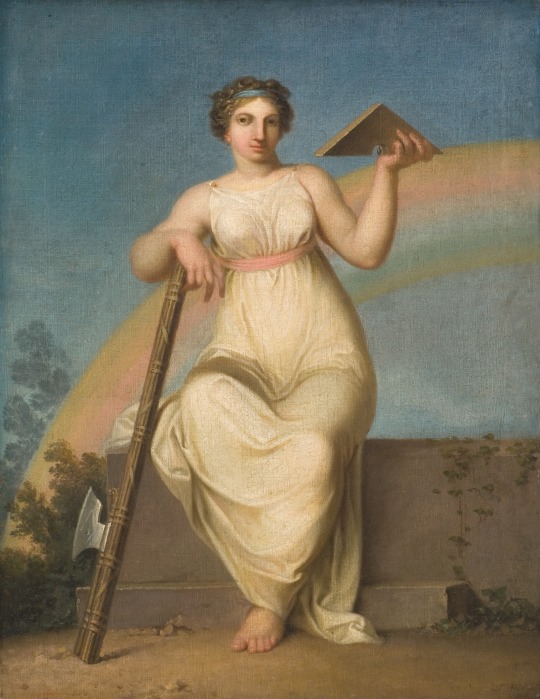
Jurisprudence. Allegorical Figure (ca. 1800)
by Nicolai Abildgaard, Danish
#Jurisprudence#Nicolai Abildgaard#Abildgaard#Danish art#Denmark#1800#empire#empire style#napoleonic era#19th century art#french empire#art#napoleonic era fashion#napoleonic era art#historical fashion#neoclassicism#pretty#women
6 notes
·
View notes
Text
"Until 1920, the United States was officially a patriarchy. The Supreme Court’s decisions about rights were made entirely by men until Sandra Day O’Connor joined the Court in 1981. It’s still the case that only 27 percent of federal lawmakers are women, which itself is a 50 percent increase compared to how many there were just a decade ago. Women had no input into the writing of the Constitution — John Adams literally laughed off his wife Abigail’s plea to 'remember the ladies' when drafting the nation’s founding charter. ('I cannot but laugh. … We know better than to repeal our masculine systems,' he wrote to her.) The great legal scholars [Supreme Court Justice Samuel] Alito cites for their authority on natural rights are men named Henry, Edward, William, and Matthew, who likely spent their entire careers without once wondering whether women might have valuable things to say on the topic of their own rights.
The implication of this should be obvious, although it entirely escapes Alito: Unless we are still to live in a patriarchy, we can give absolutely no weight to conceptions of women’s rights that came before women were allowed to participate in politics and law. Let us assume that Alito is entirely correct about his history, and that abortions were widely criminalized in the 19th century, and that the idea of a basic right to abortion does come from the 'latter part of the 20th century.' What of it? The laws were being made by men, i.e., they were undemocratic and illegitimate. A court that uses the 19th century definition of women’s rights to decide which rights the Court is bound to protect today is explicitly imposing the past’s patriarchy on the present. It’s a shocking act of turning back the clock, and yet Alito seems unaware that there’s even an issue with citing 'traditional' (i.e., patriarchal) rights to decide which rights women have in 2022.
Alito doesn’t actually discuss why all of a sudden in the 'latter part of the 20th century' the idea of a right to abortion sprang into being, but a little something happened in the 1960s and 1970s called the women’s liberation movement. Abortion rights did not come from a spontaneous whim by Roe’s opinion author Justice Harry Blackmun. They were the culmination of a social movement that arose because women were horrified that laws written by men were causing women horrific suffering and death, and being forced to give birth against one’s will was considered a grotesque violation of women’s rights.
The stories of pre-Roe America are easily found and very disturbing. Underground feminist groups worked to help women procure illegal abortions, though they faced both the possibility of prosecution and serious medical risks. Leslie J. Reagan, in When Abortion Was a Crime, describes the situation:
Public-health statistics revealed an appalling picture of death and discrimination. Health-care workers and public-health officers observed women dying and thousands more hospitalized as a result of a procedure that could be safe but was not because it was illegal. The illegality of abortion had produced a public-health disaster — especially for low-income and minority women. … The risk of dying from an abortion was closely linked to race and class. Nearly four times as many women of color as white women died as a result of an abortion. … The story of Doris B., a twenty-six-year-old black woman in Chicago, underlines the inherent limitations of legalization in one faraway state and of local efforts to provide abortions for low-income women who sought them. Even though the referral service and [the Jane Collective] tried to help all Chicago women who needed abortions, some low-income women never found either organization. The 'tragic event' was, her friend later wrote, 'well-etched in my memory.' Doris B. had four children and depended on welfare to care for them. 'It was a constant struggle to provide for these children,' her friend recalled, 'and she felt that another child was more than she could endure.' Doris B. considered going to New York, but poverty 'made that impossible. Doris chose the cheaper illegal alternative in Chicago.' She died from septicemia following her illegal abortion in 1972, and her children became orphans.
So Roe came about in part because feminist legal scholars made the compelling argument that criminalizing abortion was an unconstitutional deprivation of a basic liberty. The state did not have the right to impose these kinds of horrors on its citizens."
- Nathan J. Robinson, from "The Atrocious Reasoning of Samuel Alito." Current Affairs, 7 May 2022.
#nathan j. robinson#quote#quotations#women's rights#feminism#american history#scotus#abortion#roe v. wade#jurisprudence#women's liberation movement#leslie j. reagan#sexism#patriarchy#misogyny
7 notes
·
View notes
Photo

https://yalebooks.yale.edu/book/9780300259902/worse-than-nothing/
Praise/Blurbs/Endorsements
“Chemerinsky has written a powerful, respectful but devastating critique of the political practice known as originalism. This rich and careful book provides essential context for understanding the confusions and self-deceptions of that project.”—Aziz Z. Huq, Frank and Bernice J. Greenberg Professor of Law, University of Chicago
“Worse Than Nothing addresses an exceptionally timely and significant issue. Chemerinsky provides a definitive account of the rise and pitfalls of originalism that is accessible to a broad audience of lawyers and nonlawyers alike.”—Leah Litman, Professor of Law, University of Michigan Law School
“Worse Than Nothing is a devastating, concise, and beautifully written critique of originalism. It is a must read for anyone interested in the current debates about originalism and constitutional interpretation.”—Eric J. Segall, author of Originalism as Faith
“Originalism mistakenly seeks to slavishly tie interpretation of our living Constitution to a single point in time. Nowhere is this mistake more forcefully and clearly explained than in this excellent new book by Erwin Chemerinsky.”—Martin H. Redish, author of Judicial Independence and the American Constitution
“Clear, concise and devastating…A must-read for anyone interested in the Constitution and its contemporary meaning.”—David Cole, National Legal Director of the ACLU
3 notes
·
View notes
Link

6 notes
·
View notes
Text
The twenty-years path
My life was never about myself, nor it was for myself.
I have been given the meat of this body for someone else.
That’s what I realised when I was merely 10 years old, and my idea about life has not changed ever since, only the reasons have.
It was a simple beginning. My mother was constantly angry at my small mistakes, rather than happy about other things I did.
I do not even remember seeing her smile around that time of my life, there was absolutely no way out there to make her happy,
I found myself unworthy, and decided death was the way.
Although later, I also found that death wasn’t also easy. I contemplated - and thought, I cannot live to entertain myself or my loved one (then, mother), I was probably born to devote my life to someone who is on the verge of dying.
Then, myself at 10 years old, thought of the idea that one day, when I see someone getting hit by a car, I will jump into the car road and get hit die for them instead. That is my role, that is the purpose of my life.
That was decades ago, my reasons sound pessimistic. However, what I induced from my circumstances then wasn’t that wrong, considering what I may induce from all the other philosophical thinkings I learnt later in my life.
In my 20s, I dedicated all my times to work. I felt like I, as one individual was not capable of doing so much good to the society all by oneself, I could not change the world, my influence would be so little on the society and on the world if I spoke out, if I screamed.
Although I knew, companies and businesses analysed the market’s needs, and are established based on the needs and demands, delivering what is most needed at a time to the market, thus, automatically do good as they operate.
I was addicted to work, one paper I complete, one email I sent, contributed to something. To the office, to the client, further, to the audience that the client served, and I might have contributed to the economy as a result.
Later in my 20s, I began to feel - that I am losing balance of my own.
I was standing on the shaky ground, I felt like my feet were above the rocks, and I did not have the right to stretch my arm out to support anybody who is falling, or is in need of support. Because - if I support them with my hands and if I collapse before, what would happen? Wouldn’t that harm them more than they should have been harmed without me?
That’s when I realised - I needed to take care of myself before anything.
I was not physically very healthy to begin with. I was constantly sick and I was fine with it, as long as it only bothered me.
But I realised that would limit my capability of giving and devoting to others, I saw the need to fix myself. I needed to pay at least minimum necessary cares for myself. In order to maximise my ability to make someone else happy.
Clearly, taking care of myself, a.k.a. self-maintenance was not my purpose, it was only one of the process of achieving what I always tried to achieve. The goal was always to sacrifice myself to others, for the betterment of the society and the world as a whole.
I decided to eat better, sleep better, and opted out from doing things that may disturb me so I can keep myself mentally content rather than feeling always challenged.
It took me over 20 years to realise this, and during this whole time, my reasons have changed, but my aim never has.
I currently study Yoga philosophy, and according to its philosophy, I feel some parts of it are largely similar to my way of thinking. However, I still feel somewhat odds about what I do and how I think.
And next... I will be reasoning and writing about this next evolution of myself and my reaction to the current, modern society.
わたしは幼い頃に「わたしは自分のために生きている」と言う感覚を捨てた。
この肉体は誰かに捧げるためにある
と気がついたのは10歳の時だった。そしてそこに紐づく主張は変わっても、根本となる正義は今でも変わらない。少しの違和感をこの20年以上の時間をかけて、わたしは哲学的に説いてきたと思う。
始まりは単純なことだった。
わたしの母はその頃、わたしがする少しの間違いに怒って、頑張ったことは褒めてくれず、彼女はわたしがいることで迷惑しているようで、わたしは結局どうしたら彼女を笑顔にできるのか、わからなくなってしまった。
愛する人にとって迷惑にしかなっていないこと。わたしがいることで彼女笑顔を奪い取っていること、わたしは自分の人生の価値を見失い、人生を辞めることが正なのではないかと考えた。
しかし生死は簡単なものではなかった。幼いわたしにとって、簡単に生を選ぶことも死を実行することも自分でコントロールできる何かではなかった。そう思った時
わたしはこの肉体を、誰かのために死ぬために与えられたのではないか
と考えるようになった。
幼くて経験のないわたしには、多くのことは思いつかなかった。
誰かが将来車に轢かれそうになった時、わたしは道路に代わりに飛び込んでその人を生き延びさせられるかもしれない。それだけでもこの無駄な肉体は存在する価値があるのではないか、そう自分を説得した。
当時の考えは悲観的で、否定的な手口で始まったものに聞こえるかもしれない。だけど今でも根本的なわたしの正義は変わっていない。
「わたしの命は誰かに捧げるためにある」
昔ほど切羽詰まっていないし、今は前向きにそう考えているけれど。
20代の頃は仕事だけに盲目に取り組んだ。
若い体はいくらでも動いてくれて、寝ないで20時間近く働いても苦でもなかった。自分の正義を実行していることはわたしの心を満たしてくれた。
当時のわたしは、会社や事業というものは人々の需要を読み取り、その需要に合わせて供給するために政府や組織が見極めて設立されているもの。わたし一人の声では世界は変えられないが、会社や組織を通してだったら少しでも社会貢献ができるはずだ という考えをもとに
とにかく会社に属することに執着して、少しでも多くの仕事をこなそうと
わたしに能力があるならばどこまでも誰かのために尽くそうと、体と心を全部尽くしていた。
そして20代後半になり、気づき始めた。
土台が安定していないわたしが差し伸べられる手はない
元から体調が安定しなかったわたしが、無理をして体を酷使して働いたり尽くしたりして、自分のケアを怠り続けることでわたしが倒れて、わたしを信じてくれる人を道連れにして倒れてしまうこと。
誰も信じてついてきてくれていなかったとしても
わたしの足元が安定していないのに、わたしは誰かに手を差し伸べるべきではないということに気がついた。
その時、初めて自分に尽くすということを考えた。
もちろん、わたしのために何かをするということではない。わたしをケアするということは過程にすぎず、誰かに全力で奉仕する目的のために、わたしは自分に与える必要があるのだと。
わたしは自分に食事を与えるために時間をとり
必要最小限以上に寝て
したくないことはさせず
それによって精神状態の波を消して
自分が自信を持って手をひける状態に自分を作り出すことにした。
ここまで考えるのには自分の体を観察して、20年もの時間がかかったと思う。
わたしが今までの人生でどれだけ奉仕ができたのかはわからない。
だけど、わたしの正義は一度も変わったことがなかった。
自分のために捧げる人生ではない。
わたしはこの肉体を与えられて、この肉体の恩恵を使って誰かにそれを捧げるためにここにいる。理由は20年間変わり続けた。だけど、わたしは今まで何をしてきても、今後何をしてきても、常に誰かのために何かをしていることに変わりはない。
最近ヨガ哲学を学ぶ上で、わたしの考えは非常に「幸せ」に近い考え方だと感じることがある。
しかしそこにもまた違和感がある。
その違和感が何なのか、次は紐解いていこうと思う。
#legal philosophy#yoga philosophy#yoga#moksha#dharma#law student#philosophy#法哲学#Jurisprudence#ヨガ哲学#ヨガ#ヨガインストラクター
5 notes
·
View notes